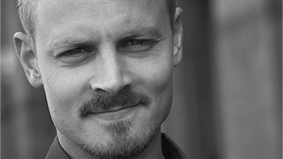I read this Frog Design piece a while back and it’s stuck in my mind ever since. It’s an interview with artist Jonathan Harris (he of We Feel Fine fame) about his (not yet live) new project that is about encouraging people to tell long-form stories (or integrated memories) using photos, videos, timelines, sound maps, and then connecting those stories up by automatically identifying commonalities (people, places, times, themes) and weaving them together into a kind of ‘meta-story’.
It is, it seems, motivated at least in part by a desire to provide a counterpoint to the apparently fragmentary nature of digital content streams.
Please accept targeting cookies to see this content
It’s an intriguing idea and I’m sympathetic to the desire to slow down, and take time outside the constantly moving flow of content and updates. But even with the most rapidly moving flows, the river still takes you to still pools, deep waters, and little eddies that suck you in. Even the most disconnected streams still seem to be able to join up in ways that you can’t foresee to become something bigger. I rather liked Marcus’s excellent presentation on Character Design in the Digital Age and how he says that the internet is a “huge empathy machine connecting millions of streams to each other”, and how digital characters live in these streams.
And then I come across HistoryPin, a partnership between Google and social movement We Are What We Do to build ‘a digital time machine that creates a new way for the world to see and share history’. It’s been up a year or so, and won a webby this year in the non-profit category, and it’s a rather lovely idea (that I hadn’t seen it before). The site invites people to upload and ‘pin’ old photos, films and audio onto a Google map and tell the stories behind them. You can make collections of pins, and create tours (you can see some of the best content here, and I like the way that local communities and schools seem to be getting involved), but it is the overlaying of these old images and films onto the modern setting via Steetview that makes it so compelling. It’s a bit like Streetmuseum, that augmented reality app from the Museum of London that allowed people to hold up their phone and see a location in London as it looked in days past.
I have no idea what point I’m trying to make with this post, beyond the rather obvious observation, once again, that it is the way that stories connect together online which is almost as interesting as the stories themselves.
Thanks to Adam for the History Pin link
Original Post: http://neilperkin.typepad.com/only_dead_fish/2011/08/never-ending-stories.html




